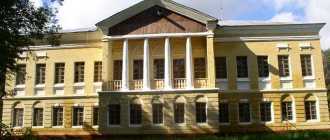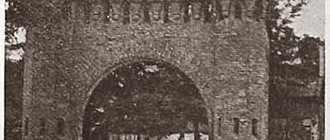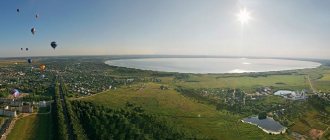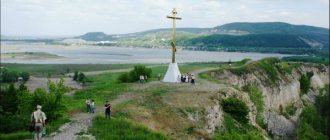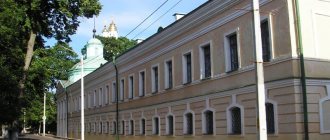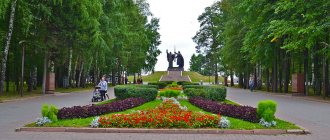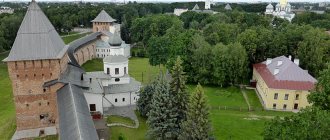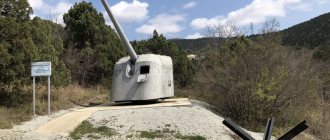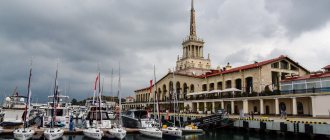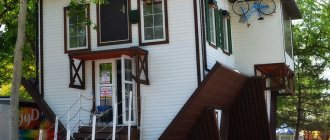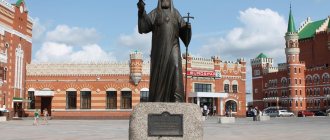Kaluga - administrative, scientific, industrial, cultural center of the Kaluga region in the Central Federal District of the European part of the Russian Federation, 200 kilometers from the capital - Moscow. The city is located on the Central Russian Upland, on the banks of the Yachenka rivers with its tributary Terepets, Oka and its tributary Kievka, occupies an area of 168.50 square meters. km, is a transport hub.
In honor of the 600th anniversary of the founding of Kaluga, on September 2, 1971, for great labor merits, she was awarded the Order of the Red Banner of Labor.
History of Kaluga
The chronology of Kaluga dates back to 1371. It was then that the settlement was first mentioned in written sources - a charter from the Grand Duke of Lithuania Olgerd, son of Gediminas. During excavations it was discovered that the first settlements on the site of the modern city date back to the 5th-7th centuries BC.
Not everything is so clear with the official date of formation. There are versions of various historians who claim that the city was founded 100 years earlier, no later than 1260. The lack of written evidence is explained by the fact that Kaluga was founded by the Mongol-Tatars on lands belonging to the East Slavic tribes of the Vyatichi, as a Baskak possession, the khan's governorship of the Golden Horde to collect tribute from controlled Russian lands. The settlement occupied a neutral position and had no relation to either the Great Lithuanian or the Moscow principalities, and was not within the scope of their territorial, military or economic interests.
The situation changed after Gediminas and his son Olgerd, through cunning combinations and local armed conflicts with the Horde, partially subjugated the Principality of Kiev (the Kiev prince was a vassal of the Lithuanians, but paid tribute to the Baskaks of the Tatar-Mongols). After this, Kaluga came under the control of the Lithuanians. In 1389, the city became part of the Moscow principality, an outpost of Russian civilization in the southwest (Olgerd complained to Patriarch Philotheus in Constantinople about this, but to no avail). This position of the fortress city remained until the Pereyaslav Rada and the inclusion of Ukrainian lands into the Russian state.
Among the significant historical events we note:
- in the period from 1505 to 1518, Kaluga was an appanage principality, after which it came under the protectorate of the Moscow principality;
- 1606 - the city becomes the residence of False Dmitry I, and later False Dmitry II;
- 1719 - Kaluga was transformed into the administrative center of the newly formed Kaluga province;
- 1748 - the appearance of the Kaluga Icon of the Mother of God, one of the most revered Orthodox shrines, the patroness of Kaluga;
- 08/24/1776 - by decree of the Russian Empress Catherine II, the Kaluga province was created, M.N. Krechetnikov became the first governor;
- On July 5, 1944, the city acquired the status of a regional center, and the Kaluga Region was formed.
Throughout its existence, Kaluga has repeatedly become the scene of fierce hostilities between the Crimean Tatars, Lithuanians, Poles and Russians. The city was of great importance during the Patriotic War of 1812, playing the role of one of the largest logistics bases for the Russian army.
During the Great Patriotic War, the occupation of the city lasted from October (the pedantic Wehrmacht fighters indicated that Kaluga was captured on October 12 at exactly 21:00) to December 30, 1941, during this short time the infrastructure was destroyed, the civilian population was subjected to repression.
During its centuries-old history, Kaluga has been repeatedly subjected to armed intervention. The city burned to the ground several times, the economy fell into decay, the people died out from terrible diseases and hunger. But this pearl of central Russia has always been reborn from the ashes like a phoenix. And now it is a beautiful city, the cradle of Russian cosmonautics, in which industrial power is combined with the Russian soul, hidden in the depths of ancient streets, parks and squares.
Teatralnaya Street
Address: Kaluga, st. Theater. Borders: north - Theater Square, southwest - st. Kropotkin.
Local residents love to walk along Teatralnaya Street, who call it “Kaluga Arbat”.
The street is a stone pavement, on both sides of which there are restaurants and cafes, souvenir shops, old houses and bronze sculptures.
People walking along this unique “Arbat” meet the Kazan Convent, an art gallery and even the Kaluga Theater on their way.
Climate of Kaluga
The climate of Kaluga is temperate continental, with pronounced seasons, which is typical for central Russia. The city is moderately hot and humid in summer and cold in winter.
The average temperature in summer is + 17°C. The average temperature in winter is 10° C, but taking into account the predominance of westerly winds with an average speed of 3-4 m/sec, the frost is perceived differently and feels like everything else - 15° C.
The snow cover is stable, which provides ample opportunities for winter recreation, for example, forest skiing. Recently, due to global warming, the region has been characterized by autumn that lasts until mid-December, but there have not yet been snowless winters.
The average annual temperature in Kaluga ranges from + 3.5 ° C to + 4.5 ° C, the warm period lasts from 215 to 220 days. The average annual precipitation is 600-700 mm and, depending on the year, can range from 356 to 1000 mm.
In general, the climate of Kaluga is favorable for living, given its physical and geographical location.
Ecopark "Biosphere"
Address: Kaluga, st. Comfortable, 15.
The park is an entertainment complex where not only adults and children, but also people who love to attend educational lectures will enjoy spending time.
The infrastructure is represented by a recreation and leisure area, where there are gazebos, observation decks and architectural forms, a zoo with exotic animals, a falcon yard with a collection of birds of prey, rental of children's cars, boats, electric vehicles and velomobiles, and a restaurant. Also, everyone can ride horses.
Ecology of Kaluga
The ecology in Kaluga is moderate. On the one hand, we note the significant negative impact of 530 enterprises, urban transport and non-stationary sources (construction sites, parking lots, etc.) on the environmental situation. Let us note the following points:
- almost all industrial facilities are located on the outskirts of the city;
- only 9 large plants and factories exceed emission standards;
- Urban transport emissions are 3 times higher than industrial emissions.
Therefore, the situation with atmospheric emissions is moderate. Although the city took only 72nd place in the rating of environmental development of Russian cities for 2013.
The statistics are as follows:
- the total volume of emissions of harmful substances into the atmosphere averages 8.5 thousand tons;
- the number of types of harmful substances is about 250 (methane, nitrogen dioxide and carbon monoxide predominate - about 70% of the total volume).
It’s easy to breathe, largely thanks to the large number of green spaces in the city and its surroundings, the famous and legendary Kaluga Forest, where oak grows - the same age as Kaluga.
But the situation with water resources and water consumption is more complex, largely due to uncontrolled discharges of storm water. Four rivers flow within the city limits - Oka, Terepets, Kievka, Yachenka, plus the Yachenskoe reservoir. But swimming in the city is not recommended. The townspeople spend their summer holidays on the lakes.
The water in Kaluga springs also often does not meet sanitary and hygienic standards.
Museums
Today, there are a dozen and a half museums open in the city. Some of them are united in the regional museum-reserve - one of the oldest Russian museums of local history, which dates back to the end of the 19th century. It includes the “Zolotorev Estate”, “Chambers of the Korobovs”, the house of the famous artist Ivan Yakovlevich Bilibin and the house of the Decembrist Gabriel Stepanovich Batenkov.
Kaluga Regional Museum of Local Lore
The Museum of Folk Art, or as Kaluga residents lovingly call it, the “House of Masters,” presents rich collections telling about Kaluga crafts. These are Khludnevskaya clay toys, products of potters, woodcarvers, wickerwork and weaving. In addition, you can get acquainted with the traditions of handicraft creativity of Kaluga residents in the city museum dedicated to crafts, architecture and life.
Of great interest are the collections of the Museum of Fine Arts, the Mineralogical Museum and the house-museum of the outstanding scientist A. L. Chizhevsky. And children really like the Bereginya doll museum, which welcomes guests in the ancient village of Kozlov, to the west of Kaluga.
House of I.G. Bilibina
Population
The population in Kaluga as of January 1, 2014 was 350.412 thousand people. Over the past 10 years, this indicator has been in an inert state and changes insignificantly.
Characteristic demographic features of the city:
- negative migration balance (most residents of Kaluga and the region prefer to work and live in Moscow, only 2.5 hours by train, in 2014 the situation stabilized and there was a trend towards positive dynamics, thanks to labor migrants and refugees);
- low birth rate and high death rate (the death rate exceeds the birth rate by 1.3 times);
- the excess of the female population over the male population, especially in the age category of 30 years and older;
- the average age of city residents is 40 years, characterized by the rapid aging of the city’s population;
- average life expectancy is 68.5 years.
- national composition - Russians predominate, Ukrainians, Armenians, Belarusians, Tatars, minor diasporas of Gypsies, Azerbaijanis, Jews, Mordvins, Moldovans and representatives of a number of other nationalities are widely represented.
In general, the demographic situation in Kaluga is typical for most cities in the Central Federal District.
The future of Kaluga is graduates of city schools
Tips for independent travelers
The close distance from Moscow and convenient transport services make Kaluga accessible for visiting even for one day. The main sights are located in the city center. Therefore, experienced tourists, traveling on foot, will easily find the selected attractions. For convenience, you can purchase a detailed map of the city.
The map shows the central streets and main attractions of Kaluga
When traveling with children, stay one night in a hotel. There are enough places to stay in Kaluga, so you don’t need to book in advance. This does not apply to holidays, when it is better to join a tourist group (very convenient and inexpensive). The tour program includes: transport, festive events, meals, excursions.
I have a lot of experience in short tourist trips. It’s better to break away from the festive table and TV, get acquainted with new places, interesting people and get a boost of energy for a long time. I went with my little daughter, but she wasn’t tired of the trip either. Although she fell asleep without waiting for the fireworks. But the impression was smoothed out by the children's matinee on January 1st with gifts, competitions, and games. Adult tourists were offered a good excursion program around the festive city. The trip took only three days, but the memories remained for the whole year.
Video: winter Kaluga
Famous people
Tsiolkovsky
The modern city claims to be the cradle of Russian cosmonautics, the eye to space, and even cosmonautics city. From 1982 to 1935, the world-famous Russian scientist and inventor, founder of modern cosmonautics K.E. lived in Kaluga. Tsiolkovsky.
He was not a native of these places and at one time lived in Vyatka and Ryazan, but the residents bask in the rays of the world's luminary and even claim that only here he was able to achieve such results.
Many famous people have lived during its centuries-old history:
- False Dmitry II (“Kaluga (Tushinsky) thief”) - was in Kaluga from 1609 to 1610, when he was killed while hunting in the suburbs;
- Maria Mniszek - Polish, wife of False Dmitry I and False Dmitry II;
- Krechetnikov M.N. - first governor of the Kaluga province.
Old Torg Square
We will begin our walk through the historical part of Kaluga from Old Torg Square, which was formerly called Lenin Square. The name Old Market dates back to merchant times, when there were various shopping arcades here: grain, fish, shoe, fur, kalachny, iron, silver, hardware, mosquito, apple, meat, glass and others.
In 1778, construction of the square began according to the regular plan approved by Catherine the Great. The Gostiny Ryad ensemble was built, which is the hallmark of the city. Interestingly, its authors are unknown. The construction of Gostiny Rows took more than 40 years. The ensemble includes 14 buildings.
In 2016, restoration was completed here, the area inside Gostiny Ryad was landscaped, concerts are held there in the summer, and an ice skating rink is installed in the winter.
Opposite Gostiny Ryad is the regional administration building, popularly called the “White House”. In front of it was a monument to Lenin, but in 2022 it was moved to Stary Torg Square and in its place a monument to Ivan III was erected. The Old Torg Square (formerly the Lenin Square), located to the right of Gostiny Ryad, if you are facing the administration, was the venue for parade parades before the revolution. During the war, a German military cemetery was located there. Now this square is landscaped, planted with various types of trees and shrubs, and there is an illuminated fountain in the center.
Economy of the region and city
The Kaluga region is one of the most economically developed regions of the Russian Federation and leads in terms of industrial production rates in many sectors of the national economy.
The industry is characterized by high-tech production. There are about 2,700 enterprises in the region. Main industries:
- mechanical engineering and metalworking are key industries for the region;
- chemical;
- light.
The main areas of development are the automotive and pharmaceutical clusters. Their uniqueness lies in the fact that production is created practically from scratch.
The following large transnational holdings operate in the Kaluga region and Kaluga:
- Novo Nordisk A/S;
- General Electric;
- Samsung Group;
- Menarini Group (Berlin-Chemie/Menarini);
- STADA AG (STADA CIS);
- Continental AG;
Investments
Kaluga and the Kaluga region, thanks to their scientific and industrial potential, favorable geographical location and adopted legislation aimed at the development of high-tech sectors of the national economy and the formation of 10 technology parks and the special economic zone "Ludvino", are distinguished by a high degree of investment attractiveness and a favorable investment climate.
In terms of investment in fixed capital, the region confidently ranks first in the Central Federal District, in terms of foreign direct investment it ranks second in the Central Federal District and third among all regions of the Russian Federation.
Geography
The Kaluga region borders on the Moscow, Tula, Bryansk, Smolensk, and Oryol regions. From north to south, the region stretches for more than 220 km from 53° 30′ to 55° 30′ northern latitude, from west to east – for 220 km, the territory area is 29.9 thousand square meters. km. The most important international highways and railways pass through the territory of the region: Moscow – Kaluga – Bryansk – Kyiv – Lvov – Warsaw.
Enterprises
In Soviet times, Kaluga was a large machine-building center, specializing in the production of machinery and equipment. Currently, the industrial potential has been preserved and is being revived thanks to investments, including foreign ones. Technoparks “Grabtsevo”, “Rosva” and “Kaluga-Yug” have been created within the city and its suburbs.
The automotive cluster is actively developing in these industrial zones (Volkswagen, Skoda, Volvo, Mitsubishi, Renault, Peugeot and Citroën cars are assembled).
Industrial structure of Kaluga:
- mechanical engineering – 46%;
- food industry – 35%;
- energy – 13% (Kaluga Thermal Power Plant);
- light industry – 1.5%.
In this regard, Kaluga has recently been called nothing less than “Russian Detroit”.
Transport
City public:
buses, trolleybuses, minibuses.
By car: the federal highway M3 “Ukraine” passes through Kaluga, which connects the city with Moscow, Bryansk, as well as with Obninsk, a science city located in the north of the Kaluga region.7
Intercity bus services depart from Kaluga bus station. Bus routes connect the city with a significant number of settlements both in the region (including Obninsk, Borovsk, Kondrovo, etc.) and other federal subjects (Moscow, Orel, Smolensk, Voronezh, Bryansk, Tula, etc.)
Zheleznodorozhny: Kaluga is an important transport hub on the railway route. The Vyazma-Ryazhsk railway line passes through the city (Kaluga-1 station), the Moscow-Kyiv highway passes through a remote area of the city (Kaluga-2). Kaluga-1 station is exclusively suburban - electric trains to Moscow (including express trains) and Sukhinichi, diesel trains to Fayansovaya, Vyazma and Aleksin, diesel express trains to Tula and Uzlovaya. Long-distance trains stop at Kaluga-2 station.
Suburban train schedule: trains from Kaluga, trains to Kaluga, electric trains in the Kaluga region.
Construction in Kaluga
The construction industry in Kaluga began to develop in the 2000s. The pace of construction is insignificant and subject to significant fluctuations. In recent years, due to the implementation of large investment projects in the industrial sector, there has been a tendency to increase the volume of commissioning of commercial and residential real estate.
Modern houses in Kaluga
The characteristic features of the construction industry in Kaluga are:
- demolition of dilapidated one- and two-story housing in the central part of the city, which is sometimes of historical value;
- construction of residential real estate in areas as close as possible to technology parks and commercial real estate in the center;
- construction of rented housing in order to compensate for the high cost of square meters, for example, a complex of dormitories in the Grabtsevo technology park.
In 2014, 190,000 sq. m. were commissioned in Kaluga. m of housing, which is 14% less than in the same period last year. On average, there is 0.88 sq.m. per city resident. 55 residential buildings and complexes are being built, this is 6,000 apartments and about 372,000 sq.m., in particular residential complexes:
- Rainbow;
- Pravgorod;
- Crystal;
- Solar.
New buildings are mainly represented by brick and monolithic houses of various heights, including ten-storey high-rise buildings and mid-rise buildings with individual heating.
The average area of apartments in new buildings is from 30 to 100 sq.m. The main offers are one-, two-, three-room apartments.
Cost of new buildings For a number of subjective and objective reasons, in terms of cost per square meter on the primary housing market, Kaluga occupies one of the first places in the Russian Federation according to the assessment of the guild of realtors, second only to Moscow, Yekaterinburg, Khabarovsk and St. Petersburg. In the sales structure, the primary market is significantly inferior to the secondary residential real estate market.
The city ranks second in terms of rising real estate prices in the Russian Federation. So in January 2014, compared to the same period last year, the cost of housing increased by 3.4%.
The average cost of one square meter in a new building is 48,000 rubles. Apartments are presented in all price ranges, from the “economy” class costing 1.8 million rubles to the “elite” class from 4 million rubles.
Crime
The regional center of the Kaluga region, compared to the region, is a fairly calm city in terms of crime. The most common crimes are theft, followed by drug trafficking, fraud and robbery.
High-profile crimes are rare in Kaluga. One of the most sensational crimes not only in the local press, but also at the Russian level is when in August 2011, drunken teenagers burned alive a homeless man sleeping on the grass in a park near the square. Victory. First they put out cigarettes on him, then doused him with flammable liquid and set him on fire.
A terrible event occurred in November 2011. Having received a bureaucratic letter refusing to provide a subsidy for an artificial limb for his disabled son, the head of the family, in despair, killed his son, wife and pregnant daughter, and then committed suicide.
In other cases, some high-profile crimes evoke ironic ridicule among Kaluga residents rather than fear and indignation. How to react to the crime of a drunk policeman who decided to shoot with a traumatic pistol in one of the entertainment establishments and accidentally injured his buttock with a rubber bullet?
A few more "original" crimes. In March 2012, robbers managed to steal an ATM containing one and a half million rubles from a shopping and office center.
You can't take this bag of money away
Just recently, a man of Caucasian nationality so heartfeltly told a gas station employee about his misfortune and the traffic police bribe-takers who were demanding money from him or depriving him of his rights, that the girl with her own hands gave him first 3 thousand, and then a total of 25 thousand rubles.
How can one not remember the famous song: “You don’t need a knife for a fool, you’ll lie to him big time - and do with him what you want.”
City districts
Administratively, Kaluga is divided into three districts:
- Leninist;
- Moscow;
- October.
Historically, several districts were formed in the city:
- Kubyaka (Kuba) - northern district of the city, distance from the center - 25 minutes by trolleybus, buildings - mainly five-story "Khrushchev" buildings;
- Baikonur - located next to Kubyaka, mainly families of space industry veterans live in this area;
- Severny is one of the most remote areas of the city, located near the ring road connected to the federal M3 Ukraine (a new residential complex Raduzhny is being built between Severny and Baikonur; cottage villages are located in the territory behind the microdistrict);
- Bashmanovka (Bushma) - the eastern district of the city, where the regional psychiatric hospital operates, consists of the private sector, nine-story panel buildings and five-story brick buildings;
- Typhoon - located in the east, named after the instrument-making plant located there, built since 1980, so the houses have a convenient layout and a Volkswagen car assembly plant nearby;
- Malinniki is the oldest north-eastern district of the city, where a turbine plant and a large industrial zone, warehouse terminals and bases are located, one of the depressed areas of the city;
- Silicate - northwestern region, the name comes from the silicate brick factory, the construction is mainly five-story buildings and multi-story new buildings, it is distinguished by good ecology and transport accessibility, largely due to the construction of the ring road;
- Podzavalie is another oldest district of the city, built on the hills descending to the Yachen reservoir, the private sector predominates, local residents say that this is “a place forgotten by God”;
- The Right Bank is a territory on the right bank of the Oka, one of the most dynamically developing areas of the city. It is there that the Pravgorod housing complex is being built;
- Terepets is a new northern district, development began in 1985, built in a forest area, characterized by good ecology;
- Annenki is a district built in Kaluga Bor for medical workers, where the regional clinical hospital and stadium are located;
- a number of others, in particular Sereda, Dubrava, Turynino.
Ugra National Park
Address: Kaluga, Prigorodnoye Lesnichestvo, 3a. Borders: in the north is the valley of the Ugra River, in the south is the Zhizdra River, and the Vorotyn border is the Oka River
“Ugra” consists of three sections: Zhizdrinsky (31,268 hectares), Vorotynsky (3,171 hectares) and Ugorsky (64,184 hectares).
The infrastructure is represented by 6 forest districts, where service hotels are located. There are 2 ecological bases in the Yukhnovsky and Kozelsky districts . Also in the Kozelsky district there is a base
"Otrada" There are parking lots for auto tourists, as well as 8 departmental recreation centers.
On the territory of “Ugra” there are former noble estates, architectural structures, places where famous battles took place and centers of the clergy. The main tourist centers of the park are Optina and Tikhonova Monasteries, the village of Nikola-Lenivets and the Shamordino Monastery. Also, do not forget about 130 archaeological sites that attract lovers of antiquity and history.
Sights of Kaluga
Kaluga is an ancient city. Attractions greet visitors from the first minutes. Just pay attention to the building of the Kaluga 1 railway station, built in 1874.
The central part of the city is history itself, two-story houses of sunny color, shady alleys create the illusion that you are in Russia of the 18th -19th centuries with its unique and mysterious soul and it seems that now you will meet ladies in exquisite outfits, who are accompanied by elegant gentlemen, and A horse-drawn carriage flashes past. It is no coincidence that this is the most favorite place for filmmakers who shoot historical films.
Among the attractions of Kaluga we note:
- an aqueduct across the Berezuisky ravine, built in 1780, there are no analogues of this structure in Russia;
- parks and squares (Kaluzhsky Bor, Komsomolskaya Grove, Parks of Culture and Leisure, named after K.E. Tsiolkovsky, Peace Square)
- Teatralnaya street;
- chambers of Korobov and Makarov;
- guest yard.
Park named after K.E. Tsiolkovsky
Address: Kaluga, intersection of Academician Korolev and Oktyabrskaya streets. Borders: north - Museum of the History of Cosmonautics, south - st. Oktyabrskaya, east - st. Academician Koroleva, west - Parkovy Lane.
The main feature is Tsialkovsky’s grave, considered a historical and cultural monument of national importance.
The infrastructure of the park is represented by a memorial complex at the grave of Konstantin Eduardovich, as well as a linden alley and a stele depicting Nikolai Vasilyevich Gogol.
Moreover, the park is a route that leads visitors to the Vostok rocket, which is a symbol of the entire city, the Tsiolkovsky Memorial Museum and the Museum of Cosmonautics.
